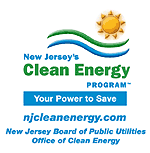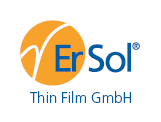 Since Part 1 implies at least one follow up post, Part 2 will focus on the “Reducing material consumption: Thin film and silicon ribbon techniques” afternoon session held at the 2nd PV Industry Forum in Freiburg im Breisgau, Germany. I did not attend the second parallel afternoon session titled “Success in large-scale rural PV projects: Experience reports by international operators”.
Since Part 1 implies at least one follow up post, Part 2 will focus on the “Reducing material consumption: Thin film and silicon ribbon techniques” afternoon session held at the 2nd PV Industry Forum in Freiburg im Breisgau, Germany. I did not attend the second parallel afternoon session titled “Success in large-scale rural PV projects: Experience reports by international operators”. Despite the title, the afternoon session on reducing material consumption began with presentations by Schott Solar and Evergreen Solar on silicon ribbon techniques. The balance of the presentations concerned thin film technologies including a-Si (amorphous silicon), CIS (Copper-Indium-diSelenide), and CdTe (Cadmium Telluride). While seven technology/product presentations were made by the participating companies, only two companies have announced plans for 100MWp or greater production: Evergreen Solar and First Solar.
Silicon ribbon technologies grow a continuous silicon wafer from molten silicon using a vertical or horizontal pulling method, eliminating silicon “saw dust” or kerf losses of 30% or more through the wire sawing of silicon ingots/blocks. Evergreen Solar’s (ESLR) string ribbon technology, developed by Mobile Solar alumni, stole the spotlight with plans to expand the capacity of EverQ to 300MW by 2010. Renewable Energy Corporation ASA, (OSL:REC) has joined the EverQ joint venture between Evergreen Solar and Q-Cells (FRA:QCE), committing raw silicon supplies for the EverQ JV beginning in 2008.
First Solar burst on the worldwide solar industry in 2006 with aggressive capacity expansion plans for CdTe thin film solar modules on frameless, glass substrates. In the United States, First Solar is now ramping 50MWp of new production to augment their existing 20MWp base. Furthermore, First Solar has begun construction of a 100MWp facility located in Frankfurt (Oder), Germany, scheduled to begin production in mid-2007. Although CdTe is a mining waste by-product, First Solar believes CdTe is available in sufficient quantities to mass produce solar modules. While First Solar did not provide an “efficiency” for their modules, they have outperformed comparable crystalline and amorphous silicon modules in a commercial installation at Tucson Electric Power (TEP) in Arizona. First Solar has a sustainable vision for CdTe solar modules from low cost production to end of life recycling. Reminiscent of Henry Ford’s production innovations, First Solar plans to build just one product, a 600x1200mm module, in 3 hours with fully automated assembly lines. This “Model-T”, one size fits all, solar module is targeted at large scale, commercial, solar power installations where cost, not form factor, is the key requirement. Recognizing environmental concerns about the disposal of heavy metals, First Solar has developed a pre-funded program, administered by an independent company, to take back and recycle their CdTe solar modules at their end of life (25 or more years).
GP View: Evergreen Solar continues to execute on their plans to commercialize and ramp their silicon string ribbon technology (Full disclosure: I own some shares of ESLR stock). First Solar appears to have an interesting CdTe thin film photovoltaic technology and an integrated product, production, and marketing strategy. The photovoltaic material properties of CdTe are superior to crystalline silicon, but First Solar will need to deliver modules at a lower cost per watt than crystalline silicon to succeed. In addition, First Solar must source their CdTe raw materials at competitive prices and evangelize their sustainable product life cycle vision to allay environmental fears about their heavy metal product content.
 Although Evergreen Solar (ESLR) revenues almost doubled and gross margins increased 16.6 percentage points sequentially from the first quarter 2006, financial wire stories (AP, Reuters) erroneously focused on year over year comparisons to the second quarter 2005. Second quarter 2006 results were actually in-line with revenue estimates, and ESLR had a smaller loss than expected. The EverQ joint venture factory remains on track for full production by the end of the third quarter. Investors have sold the stock down over 19% since the second quarter results were announced, after the market close, on Tuesday, July 25.
Although Evergreen Solar (ESLR) revenues almost doubled and gross margins increased 16.6 percentage points sequentially from the first quarter 2006, financial wire stories (AP, Reuters) erroneously focused on year over year comparisons to the second quarter 2005. Second quarter 2006 results were actually in-line with revenue estimates, and ESLR had a smaller loss than expected. The EverQ joint venture factory remains on track for full production by the end of the third quarter. Investors have sold the stock down over 19% since the second quarter results were announced, after the market close, on Tuesday, July 25.




















